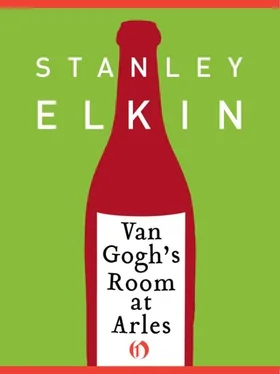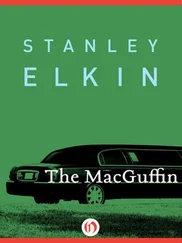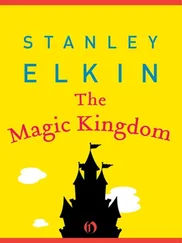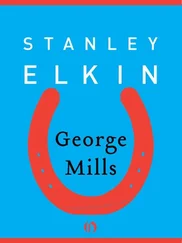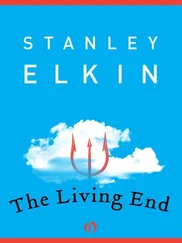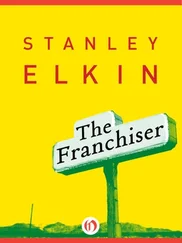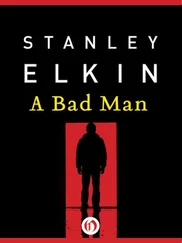“What?” Miller asked. “What do you want?”
“To have the lend of your key,” Félix Rey said.
“My key? What key?”
“To here,” said Rey, “the key to here.” He waved his arm about.
“But it isn’t my key,” Miller said. “It belongs to the Foundation. I have to return it.”
“The lend,” Rey said, “the lend. I will have it duplicated. Before the sun has arose I will bring it back. You shall have it in your hand before you start back for Indy. I will guarantee for this, Monsieur Sir.” He looked closely at Miller. “I shall leave — ooh la la — L’Arlésienne behind as my pledge. Is this agreeable, Madame Ginoux?”
“Très agreeable.”
“But why?” Miller asked.
“Have I not said you of our little group? Have I not very here speak of the Club of the Portraits of the Descendants of the People Painted by Vincent Van Gogh? You have seen for your eyes on the group photograph. On there is the peasant, Patience Escalier. On there are the Roulins— Joseph, Berceuse, Armand, and Camille. On there is the Zouave whom you have know. And the incomparable Madame Ginoux. As well as your humble servant, myself, Félix Rey. Here is the venue of the portraitees. For this is the key needed.”
“Nonsense,” Miller said, “go to the public garden, why don’t you?”
“In winter in the public garden the mistral blows through. It could kill the peasant, old Patience Escalier.”
“Go in summer to Les Alyscamps,” Miller said. “Meet by the Trinquetaille Bridge.”
“Monsieur, here is only the proper venue. You know it, I know it,” the doctor said with some dignity. And then, with none at all, he said once again that he’d leave Madame Ginoux as his pledge.
“I’m sorry,” said Miller and, to his surprise, he genuinely was. “Come,” he said, “I’ll go downstairs with you.”
That night he couldn’t sleep. He laid out his clothes for the morning, stripped down, and got into the bed, but within minutes, realizing that he didn’t even desire sleep, he got out of bed again and put on the clothes in which he’d be traveling back to America. It wasn’t that he was not drowsy— nor so very wide awake. It was rather a question of how interesting it had all been, how very interesting it still was. It wasn’t a question of happiness. Happiness (or unhappiness either) was not part of the equation. A lot of it had to do with being abroad, but he still didn’t mean geography. He’d been abroad in the sense of some surrounding or enveloping substance, abroad, he meant, in conditions. The way men were abroad, say, in airplanes, or in submarines fathoms, leagues, beneath the surface of the sea. On this last night in Arles he was just too interested to sleep.
He made the bed he had so briefly untidied. He fluffed the yellow pillow slips, turned down the yellow top sheet over the red blanket, and then tucked the blanket tight about the mattress. He brought his parcels and PC, suitcase, and garment bag over by the piano bench in front of the fourth wall and sat down to study the room from the very place where Van Gogh must have been when he painted it. He’d done this before, of course. He remembered telling Hartshine about it: But he’d never studied it at night before, in the light given off by the room’s puny overhead bulb. The color values were so very different. It was not at all like looking at a bad reproduction. It was more like looking at an entirely different painting, a work of genius, and immensely interesting.
Then, toward dawn, but while it was still dark out — if anything he was more wide awake than ever — Miller decided to turn off the light. Low as the light had been, his eyes still had to adjust to this new black dark. What he saw now, the almost colorless configuration of shapes and masses, made a different and still stranger picture and, as dawn came and the light turned milky, and then, as the sun rose higher and the room experienced its gradual yellowing, it seemed almost to go through a process of queer simultaneity, of aging and renewal at once.
It was time to go. He had to cross the square to Number 30, drop off his key (without, he hoped, having to see Rita, or Hartshine, or, for that matter, anyone he knew), and then wait out in front of the inn for the taxi he’d arranged to pick him up to take him to the train station. He looked around Van Gogh’s room at Arles one last time and took up his things to bring them down with him.
There, in the hallway, he was able to see the still unpainted rooms and, just for a second, rendering them with his own poor unrendering eyes, Miller imagined he could see paintings on all the blank, colorless walls of Van Gogh’s yellow house— the gorgeous asparagus he’d eaten in Cannes topped with their two, perfectly made eggs, his marvelous iced coffee the brown-black color of roots and bears. But rendering, too, the canceled flowers and the unsold fruit; the men and women dancing in the hotel, Inga Basset’s thigh insinuated between Jesus Hans’s legs; the brother-in-law with his carton of spoiling produce. Rendering everything unrendered, all the still lifes and unpainted masterpieces of Cannes — what shot by his all-but-shut eyelids on the bus and, spilling over onto the unpainted fourth wall of Van Gogh’s room at Arles, the ghost Rey, and the ghost Zouave, and the ghost Ginoux, and all the other ghosts, the beautiful ruin of the world he couldn’t quite catch, like everything else he couldn’t quite catch, everything untranslated and left unsyntaxed in his inadequate French, the guts, the soul, the brains and eyes, all the inner extremities and other moving parts of vision, of vision.
A Biography of Stanley Elkin
Stanley Elkin (1930–1995) was an award-winning and critically acclaimed novelist, short story writer, and essayist. He was celebrated for his wit, elegant prose, and poignant fiction that often satirized American culture.
Born in the Bronx, New York, Elkin moved to Chicago at the age of three. Throughout his childhood, he spent his summers with his family in a bungalow community on New Jersey’s Ramapo River. The community provided many families an escape from the city heat, and some of Elkin’s later writing, including The Rabbi of Lud (1987), was influenced by the time he spent there.
Elkin attended undergraduate and graduate school at the University of Illinois at Urbana-Champaign, where he received his bachelor’s degree in English in 1952 and his PhD in 1961. His dissertation centered around William Faulkner, whose writing style Elkin admitted echoing unintentionally until the 1961 completion of his short story “On a Field, Rampant,” which was included in the book Criers & Kibitzers, Kibitzers & Criers (1966). Elkin would later say that story marked the creation of his personal writing style. While in school, Elkin participated in radio dramas on the campus radio station, a hobby that would later inform his novel The Dick Gibson Show (1971), which was a finalist for the National Book Award in 1972.
In 1953, he married Joan Jacobson, with whom he would have three children. Elkin’s postgraduate studies were interrupted in 1955 when he was drafted to the U.S. Army. He served at Fort Lee in Virginia until 1957 and then returned to Illinois to resume his education. In 1960, Elkin began teaching in the English department at Washington University in St. Louis, where he would remain for the rest of his career.
Elkin’s novels were universally hailed by critics. His second novel, A Bad Man (1967), established Elkin as “one of the flashiest and most exciting comic talents in view,” according to the New York Times Book Review . Despite his diagnosis with multiple sclerosis in 1972, Elkin continued to write regularly, even incorporating the disease into his novel The Franchiser (1976), which was released to great acclaim. Elkin won his first National Book Critics Circle Award with George Mills (1982), an achievement he repeated with Mrs. Ted Bliss (1995). His string of critical successes continued throughout his career. He was a National Book Award finalist two more times with Searches and Seizures (1974) and The MacGuffin (1991), and a PEN Faulkner finalist with Van Gogh’s Room at Arles (1994). Elkin was also the recipient of the Longview Foundation Award, the Paris Review Humor Prize, Guggenheim and Rockefeller fellowships, a grant from the National Endowment for the Arts and Humanities, and the Rosenthal Family Foundation Award, as well as a member of the American Academy of Arts and Letters.
Читать дальше
